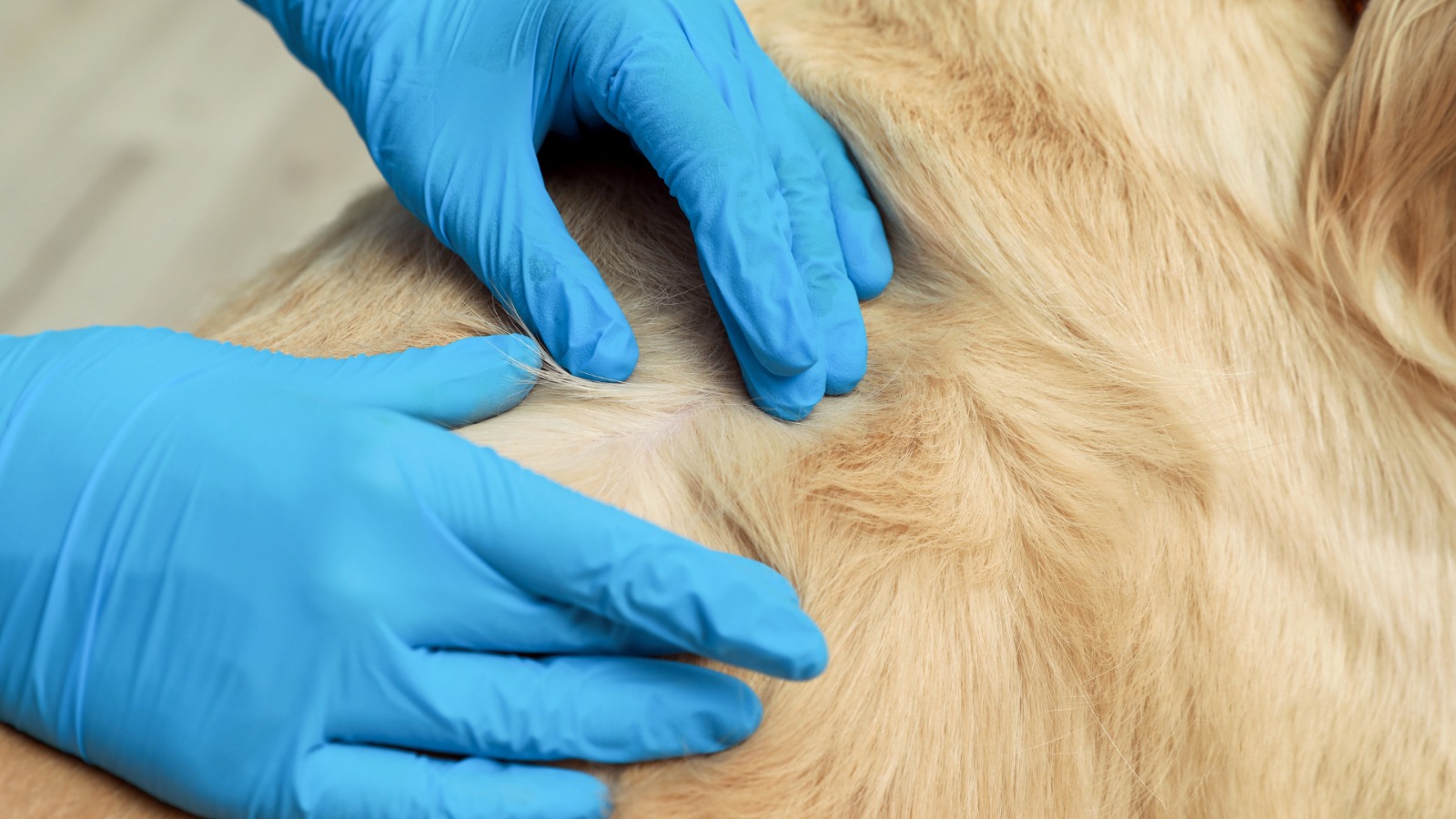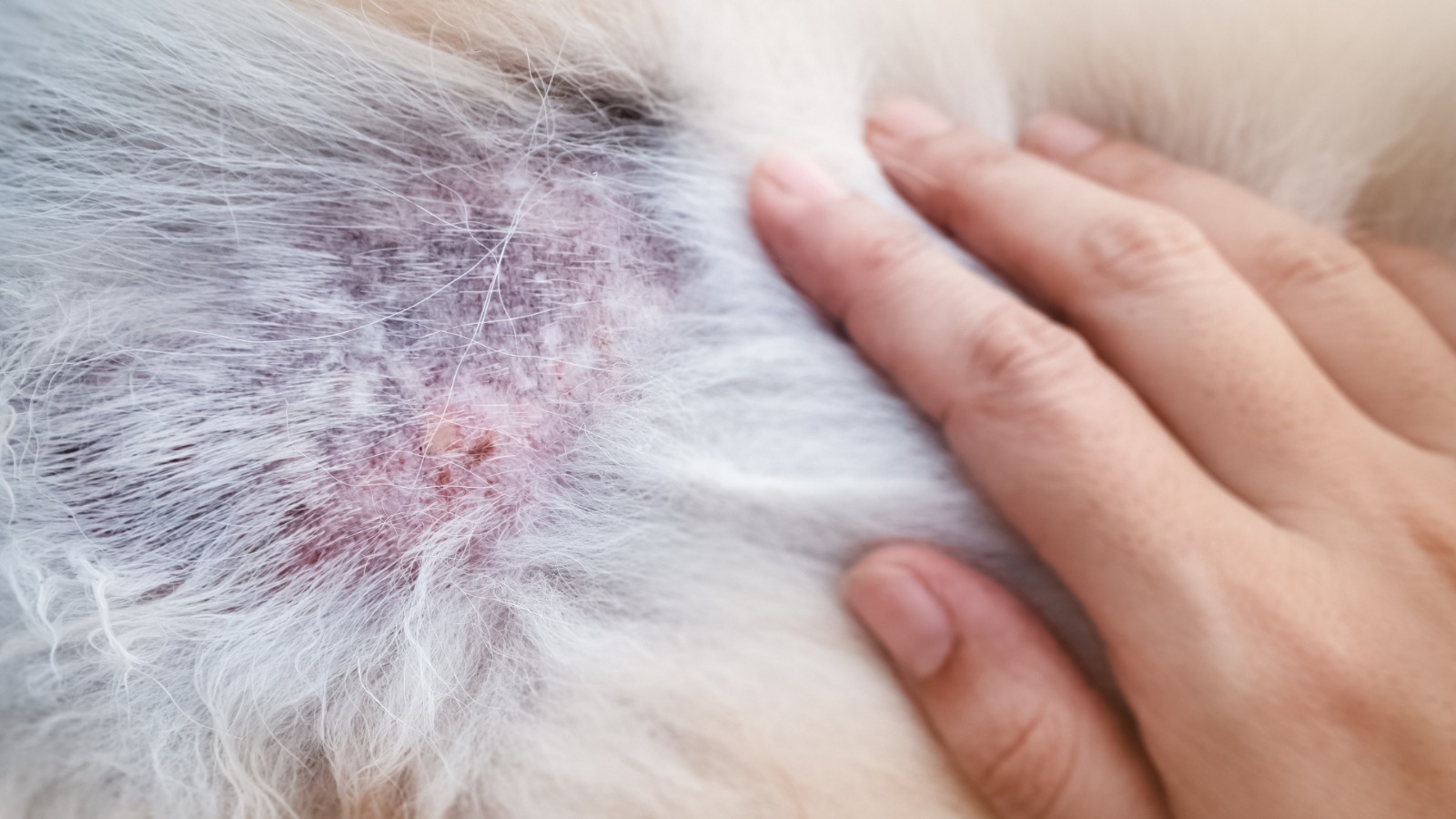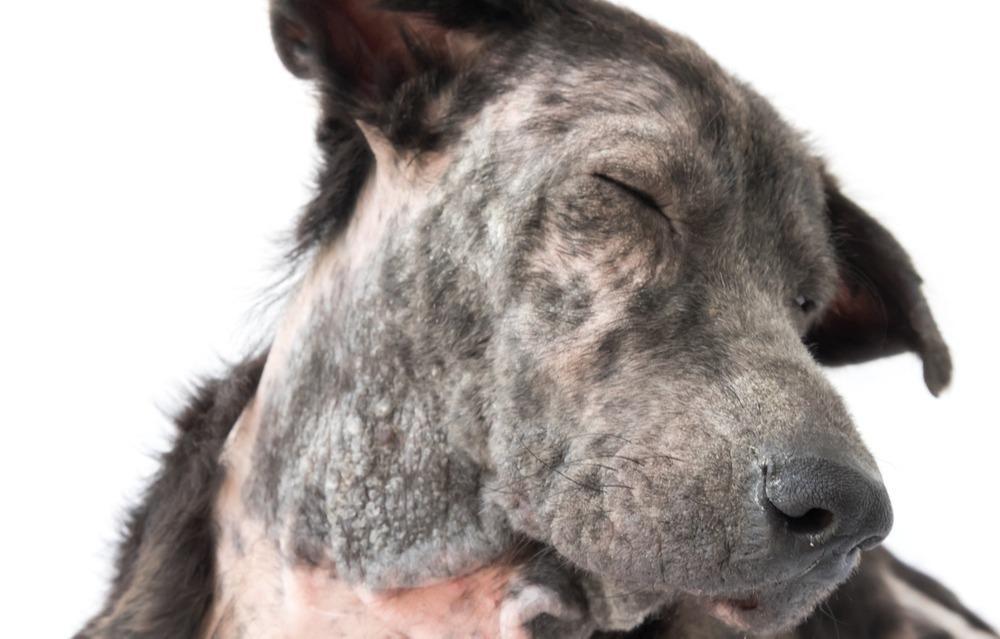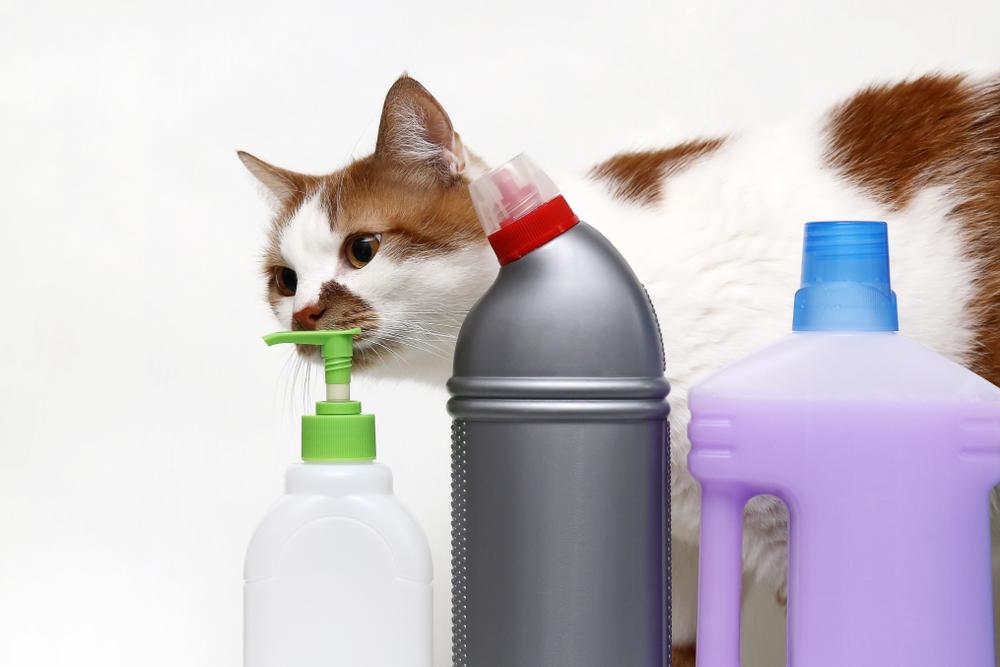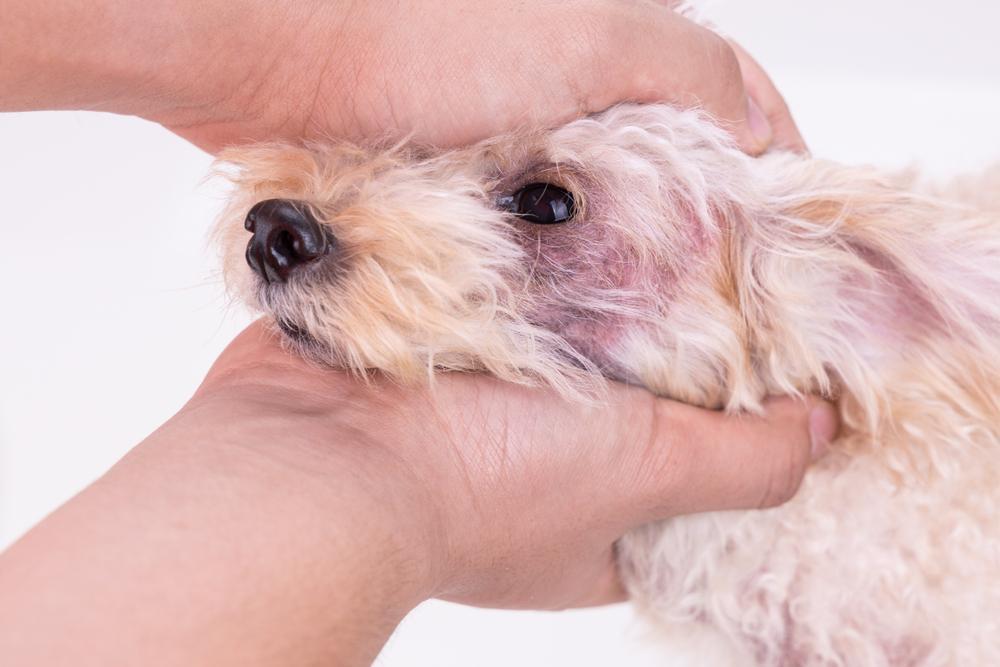The primary two functions of the skin is to act as a protective barrier and an immune barrier, between the body and its external environment, it keeps everything in, and prevents the entry of pathogens and allergens. Here at My Pet Nutritionist, we have heavily focussed on the skin function and allergies so let’s take a look.
A defective skin barrier is a key feature of the chronic inflammatory skin disease, atopic dermatitis and it has been noted that the protein filaggrin has a pivotal role in skin barrier function. Mutations with the
FLG gene, which encodes filaggrin, strongly predisposes to conditions including atopic dermatitis and secondary allergic diseases. Whilst we always find these revelations in human literature, we have found that this also applies to dogs. So, let’s take a look at filaggrin in a little more detail and how there is a possibility that the skin issues faced by your dog may have a genetic origin.
What is Filaggrin
The term filaggrin, derived from filament-aggregating protein, was first coined in 1981 to describe a class of structural protein that had been isolated from the stratum corneum (the outermost layer of the epidermis of the skin).
Filaggrin is formed from the breakdown of profilaggrin, a protein contained in the granular layer of the upper epidermis. Filaggrin is vital for skin cells to mature properly into the tough, flat corneocytes that form the outermost protective layer of our skin known as the cornified cell envelope (CCE). It does this by binding together the rigid keratin filaments that form a structural skeleton within the cells. As a result, the cells collapse and become flattened.
The CCE is constantly renewed by new cells formed in the basal layer of the epidermis. These gradually work their way to the top of the skin layers where they become corneocytes. They will then shed. Surrounding the corneocytes you will find a layer of lipids, which coat the CCE, keeping the skin waterproof, protected and supple. This also provides a protective layer, keeping out irritants and allergens. Without filaggrin, the CCE does not form correctly. Corneocytes dry out, and the lipid layer is lost. This results in dry, cracked skin and a permeability to the skin.
Atopic dermatitis is characterised by these symptoms, and data has revealed an association between loss of functions of the filaggrin coding gene and this condition.
In short, these conditions are more commonly noted in those with a mutant gene, than those without a mutant gene.
What is particularly interesting is that the environment plays a role, not only in developing atopic disease, but also directly in FLG expression. It is regularly noted that exposure to irritants can reduce epidermal FLG levels and lead to an acquired filaggrin deficiency.
The FLG deficiency, be it genetically determined or acquired, causes an altered epidermal structure and an impaired barrier function. Sadly, this allows penetration of environmental allergens into the skin, including house dust mites, pollen, bacteria, irritants, and toxicants but it also results in sensitisation of the host.
The resultant alteration of the epidermis by way of increased pH, altered lipid secretion, modification of keratinocytes and reduction of antimicrobial peptides also then paves the way for the perfect environment for other bacteria and fungi to thrive, leading to recurrent skin infections, which you’ll have likely observed in cases of canine atopic dermatitis.
Environmental and Inflammatory Factors known to alter the amount of Filaggrin:
Humidity
It seems there is a correlation between indoor humidity and disease severity. In human studies, in those children with atopic dermatitis and
FLG mutations, their skin lesions are more often located in air-exposed skin areas. Interestingly, children with atopic disease experience a reduction in disease severity after one month spent in a humid climate. It seems that filaggrin and more filaggrin proteolysis is required in a dryer environment and for that reason, it is often concluded that children predisposed to atopic dermatitis should be encouraged to increase their indoor humidity.
Findings here
Mechanical damage
Mechanical damage includes stretching, compression, and friction on skin cells. It not only affects the barrier function of the skin but also induces various immune responses, triggering inflammation at the site of the stress on the skin. For example, scratching of itchy lesions exacerbates the skin inflammation in atopic dermatitis. This increase in inflammatory mediators has been seen to down regulate filaggrin expression.
Skin Irritants
Studies have demonstrated that profilaggrin expression can be down regulated after application of experimental sodium lauryl sulphate (SLS). In the 6 hours post exposure, it was noted that SLS in fact induced skin barrier defects.
Findings here
SLS is what’s known as a surfactant. This means it lowers the surface tension between ingredients, which is why it’s used as a cleansing and foaming agent.
You will find SLS in a range of human products and may find it in some dog grooming products. It is generally what makes them foam.
Human Products:
- Hand sanitiser
- Makeup remover
- Liquid hand soap
- Shampoo
- Conditioner
- Styling gel
- Bubble baths
- Dental care products like toothpaste
- Anti-itch creams
- Sunscreen
You may also find it as a food additive in certain products, it is used to mix acids with other liquids, or as an emulsifier or thickener.
Dog Grooming Products:
- Shampoo
- Conditioner
- Detangler
- Conditioning balms
- Deodorising sprays
- Cologne
It is also worth noting that some shampoos specifically prescribed or advertised for use in atopic disease also contain SLS, amongst other ingredients.
The issue is that when products reduce filaggrin expression, it disrupts the skin barrier, making it permeable to other toxicants and irritants, creating a vicious cycle.
What you choose to apply to your dog’s coat and skin is just as important as what you put into their body through their diet. Not only that, but whilst you may not be applying human products directly to your dog, they may come into contact with them through exposure to soft furnishings or you.
In the hopes to create a mechanical barrier, without harsh chemicals being used, there are certain topical products such as
Allerderm (containing ceramide, fatty acids, cholesterol and so forth) that have shown some promise as part of a nutritional programme.
Inflammatory Factors
Inflammation has been seen to down-regulate filaggrin. The two main factors that we’ll focus on is immune response and psychological stress.
It’s easy to see how atopic disease and filaggrin expression can become intertwined. The lower expression disrupts the physical barrier of the skin, which places it at risk of increased penetration of allergens and irritants. These allergens and irritants then kick start an inflammatory response, which subsequently reduces filaggrin expression further. What is particularly interesting is that in mice models, even in normal conditions, with an FLG mutation, they demonstrate spontaneous inflammatory responses in the skin. They also demonstrate a reduced inflammatory threshold – meaning they are more sensitive than non FLG mutant mice.
Inflammatory biomarkers are also activated in the face of exposure to stress to help repair tissue and fight potential pathogens. Centrally, the HPA responds to psychological stress by up-regulating stress hormones. These hormones then stimulate norepinephrine and cortisol release from the adrenal glands, and then directly stimulate immune cells in the blood and periphery via their receptors. In the skin, immune cells release cytokines, chemokines and neuropeptides that modulate local inflammatory response and sensory nerves release neuromediators that modulate cutaneous inflammation,pain and itching. In short, there is a local production of a range of neurohormones and neuropeptides in the skin in response to stress that can down regulate filaggrin expression.
Breed Differences
As FLG is a gene coding, it stands to reason that you may want to explore there may be breed commonalities. Studies have initially found Labradors and West Highland White Terriers significant in representation. However, when replicated in different geographical areas, this was not the case. Researchers have explored breed differences for the FLG mutation but have not yet found a large enough sample to draw any conclusions.
Findings here
But human studies do provide us with further food for thought; research is indicating that allergy risk maybe transmitted through mothers.
It is noted that maternal filaggrin mutations can increase the risk of atopic dermatitis in their offspring. If this translates to the canine, it again demonstrates the relevance of where owners source their puppies from.
Findings here
Summary
Filaggrin plays an important role in the skin’s barrier function. It brings together structural proteins in the outermost skin cells to form tight bundles, flattening and strengthening the cells to create a strong barrier. This barrier forms part of the immune system. Without filaggrin, the protective layer of the skin does not form correctly. There are genetic mutations that can result in a mutant FLG, but environmental factors can also result in an acquired deficiency.
These environmental factors include humidity, stress, irritants and more. Here at
My Pet Nutritionist, we always advocate to reduce stress for our canines in any way possible. Depending on where you live, you may be limited controlling humidity, but we can be mindful of the products we apply to our dogs. Check the ingredients in any grooming products used and consider any exposure to human products too. Some products that are advertised specifically for skin issues can in fact do more harm than good too.
Skin issues are incredibly complex, but here at My Pet Nutritionist, we have a wealth of experience in tackling them. If you would like any support, then please check out our services
here.
Thanks for reading!
Lisa x




